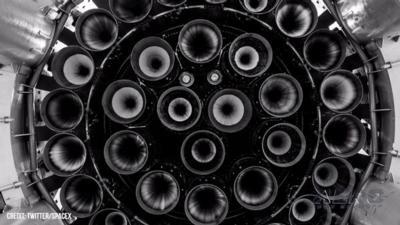November 2022 Liftoff “Highly Likely” Says Elon Musk
Elon Musk posits the first orbital launch of SpaceX’s much-lauded, eagerly-anticipated Starship is “highly-likely” to liftoff in November 2022. Spaceflight pundits disagree with Musk, however, maintaining collectively that the tech mogul’s assertions are based on optimism and bluster more so than objectivity and historical precedent.

Musk took to Twitter—that great selective amplifier of sanctioned information—on 21 September for purpose of shedding light on the steps by which his boffins plan to advance Starship toward its crucial orbital launch debut. Musk revealed that SpaceX intends to roll its Super-Heavy Booster Seven (B7)—currently assigned to handle the inaugural launch’s heavy, initial lifting—back to the company’s Boca Chica, Texas Starship factory for robustness upgrades. Subject upgrades will ostensibly fortify the stage’s thrust-section to a degree commensurate with B7 surviving explosive failures of any number of the 33 Raptor V2 rocket engines by which it’s powered.
On 20 September, B7 underwent a static-firing of seven of the aforementioned Raptor engines—all of which performed nominally.
Super-Heavy Booster Eight was rolled to the launch-pad on 19 September, and will likely be proof-tested as Super-Heavy Booster Seven receives its robustness upgrades. Meanwhile, Starship 24—which completed its first six-engine static-fire on 8 September—is undergoing modifications connotative of SpaceX’s dissatisfaction with the vehicle’s performance.
Upon completion of its upgrades, B7 will be returned to the Boca Chica Starbase launch-pad, where it will undergo the first full Super-Heavy wet dress-rehearsal and the first contemporaneous static-firing of all 33 of its Raptor engines. The former undertaking will see the immense stage’s tanks filled with thousands of tons of volatile propellant and its fuel storage and delivery systems checked for integrity. The latter exercise will test the superlatively complex logistics of lighting-off and controlling the burn and gimbaling of the better part of three-dozen engines producing a combined thrust of 16,830,000-pound-feet.

Historically, SpaceX has waxed temperate in matters of engine testing, restricting static-firing to one, three, and seven engines over a six-week period. Ergo, it’s unlikely that the entire complement of Super-Heavy Booster Seven’s Raptors will be fired on the first attempt—unlikely but not impossible.
Whether or not SpaceX plans to conduct the requisite pre-launch tests with B7 and S24 fully stacked remains to be seen. Such an arrangement would expose a potentially flightworthy Starship to the hazards inherent the riskiest Super Heavy Booster tests yet undertaken.
Overt risk and legions of credentialed naysayers notwithstanding, Musk believes SpaceX will have not only one, but two pairs of orbital-class Starships and Super-Heavy boosters (B7/S24 and B8/S25) ready for orbital flight by November 2022—thereby potentially enabling a rapid-return to flight following the first attempt. The Tesla and SpaceX CEO, and world’s richest man has also expressed confidence in Super-Heavy Booster Nine (B9), which he states features “many design changes,” including a thrust-section that wholly isolates all 33 of the stage’s Raptor engines from one another. Such an architecture could conceivably mitigate or wholly prevent chain-failures—instances in which the uncontained failure (read “explosion”) of a single Raptor engine damages or destroys outright the functioning engines adjacent to it.
 ANN's Daily Aero-Term (04.25.24): Airport Rotating Beacon
ANN's Daily Aero-Term (04.25.24): Airport Rotating Beacon ANN's Daily Aero-Linx (04.25.24)
ANN's Daily Aero-Linx (04.25.24) Klyde Morris (04.22.24)
Klyde Morris (04.22.24) Airborne 04.24.24: INTEGRAL E, Elixir USA, M700 RVSM
Airborne 04.24.24: INTEGRAL E, Elixir USA, M700 RVSM Airborne 04.22.24: Rotor X Worsens, Airport Fees 4 FNB?, USMC Drone Pilot
Airborne 04.22.24: Rotor X Worsens, Airport Fees 4 FNB?, USMC Drone Pilot




